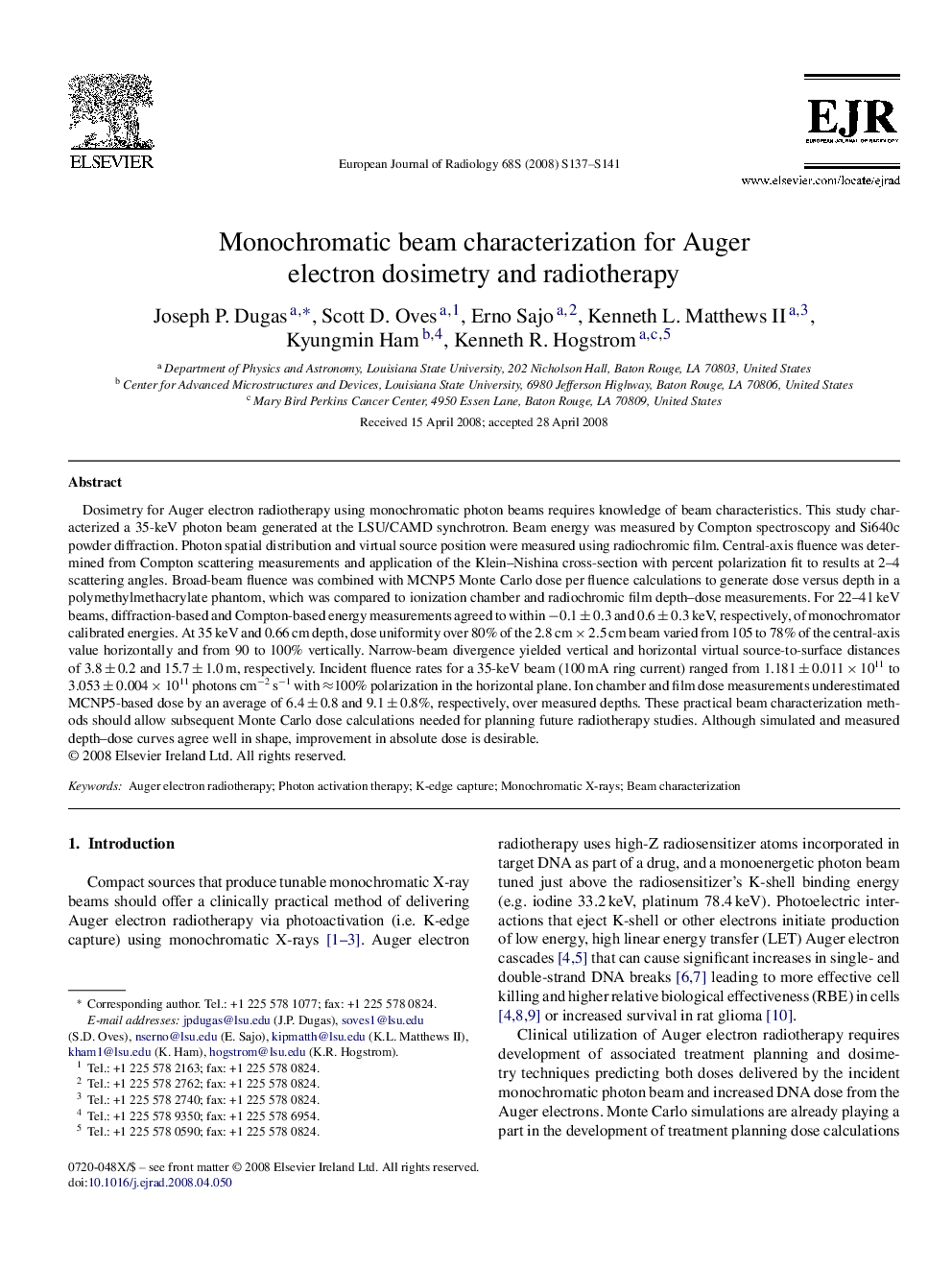| Article ID | Journal | Published Year | Pages | File Type |
|---|---|---|---|---|
| 4227944 | European Journal of Radiology | 2008 | 5 Pages |
Abstract
Dosimetry for Auger electron radiotherapy using monochromatic photon beams requires knowledge of beam characteristics. This study characterized a 35-keV photon beam generated at the LSU/CAMD synchrotron. Beam energy was measured by Compton spectroscopy and Si640c powder diffraction. Photon spatial distribution and virtual source position were measured using radiochromic film. Central-axis fluence was determined from Compton scattering measurements and application of the Klein-Nishina cross-section with percent polarization fit to results at 2-4 scattering angles. Broad-beam fluence was combined with MCNP5 Monte Carlo dose per fluence calculations to generate dose versus depth in a polymethylmethacrylate phantom, which was compared to ionization chamber and radiochromic film depth-dose measurements. For 22-41 keV beams, diffraction-based and Compton-based energy measurements agreed to within â0.1 ± 0.3 and 0.6 ± 0.3 keV, respectively, of monochromator calibrated energies. At 35 keV and 0.66 cm depth, dose uniformity over 80% of the 2.8 cm Ã 2.5 cm beam varied from 105 to 78% of the central-axis value horizontally and from 90 to 100% vertically. Narrow-beam divergence yielded vertical and horizontal virtual source-to-surface distances of 3.8 ± 0.2 and 15.7 ± 1.0 m, respectively. Incident fluence rates for a 35-keV beam (100 mA ring current) ranged from 1.181 ± 0.011 Ã 1011 to 3.053 ± 0.004 Ã 1011 photons cmâ2 sâ1 with â100% polarization in the horizontal plane. Ion chamber and film dose measurements underestimated MCNP5-based dose by an average of 6.4 ± 0.8 and 9.1 ± 0.8%, respectively, over measured depths. These practical beam characterization methods should allow subsequent Monte Carlo dose calculations needed for planning future radiotherapy studies. Although simulated and measured depth-dose curves agree well in shape, improvement in absolute dose is desirable.
Related Topics
Health Sciences
Medicine and Dentistry
Radiology and Imaging
Authors
Joseph P. Dugas, Scott D. Oves, Erno Sajo, Kenneth L. II, Kyungmin Ham, Kenneth R. Hogstrom,
